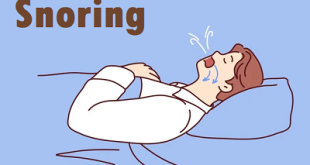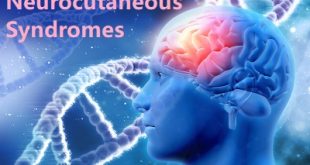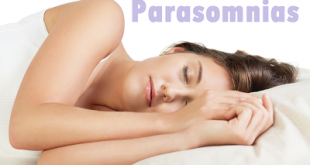Definition
Nightmare disorder is a sleep disorder in which frequent disturbing dreams interfere with a person’s ability to function well during the day or cause emotional distress. Nightmares typically occur during a phase of sleep called rapid eye movement (REM) sleep. This phase usually occurs relatively late in the sleep period, often in the second half of the night. Some people may experience multiple nightmares during the night.
Nightmares are common in children, but they tend to decrease in frequency as a child gets older. By adolescence, nightmares are usually less frequent, although many adults continue to experience them throughout their lives. Most people have unpleasant dreams from time to time, but the disturbing dreams associated with nightmare disorder are exceptional in their frequency and impact on the dreamer’s emotional state.
Epidemiology
Nightmares are common, with three-quarters of children experiencing a nightmare at least once. Prevalence varies because of different diagnostic criteria and different study populations. Nightmares have been noted to occur in 2–11% of young children “always and often” and in 15–31% “now and then.” Some studies estimate as many as 50% of children aged 3–6 years have nightmares that disturb both their and parents’ sleep. Approximately one-third of adults with recurrent nightmares have onset of symptoms in childhood.
Risk factors
Nightmares can happen to anyone, and in most cases the reasons why the nightmares occur are unclear. Stress, anxiety, an irregular sleep routine, or being overtired can increase your risk for nightmares.
Some medications, such as antidepressants and medications for hypertension or Parkinson’s disease, may increase the frequency of nightmares. Nightmares that cause sleep problems may also be associated with factors such as:
- Another sleep disorder
- A medical condition
- Medication use
- A mental health disorder such as depression, anxiety, or PTSD
- Substance abuse
Having the same nightmare repeatedly over time can also be common after severe stress or a traumatic event. These nightmares are often a way of “reliving” the traumatic event.
Causes of nightmare disorder
Nightmare disorder is referred to by doctors as parasomnia a type of sleep disorder that involves undesirable experiences that occur while you’re falling asleep, during sleep or when you’re waking up. Nightmares usually occur during the stage of sleep known as rapid eye movement (REM) sleep. The exact cause of nightmares is not known.
Nightmares can be triggered by many factors, including:
Stress or anxiety: Sometimes the ordinary stresses of daily life, such as a problem at home or school, trigger nightmares. A major change, such as a move or the death of a loved one, can have the same effect. Experiencing anxiety is associated with a greater risk of nightmares.
Trauma: Nightmares are common after an accident, injury, physical or sexual abuse, or other traumatic events. Nightmares are common in people who have post-traumatic stress disorder (PTSD).
Sleep deprivation: Changes in your schedule that cause irregular sleeping and waking times or that interrupt or reduce the amount of sleep you get can increase your risk of having nightmares. Insomnia is associated with an increased risk of nightmares.
Medications: Some drugs including certain antidepressants, blood pressure medications, beta-blockers, and drugs used to treat Parkinson’s disease or to help stop smoking can trigger nightmares.
Substance misuse: Alcohol and recreational drug use or withdrawal can trigger nightmares.
Other disorders: Depression and other mental health disorders may be linked to nightmares. Nightmares can happen along with some medical conditions, such as heart disease or cancer. Having other sleep disorders that interfere with adequate sleep can be associated with having nightmares.
Scary books and movies: For some people, reading scary books or watching frightening movies, especially before bed, can be associated with nightmares.
Nightmare disorder symptoms
It occurs when people experience vivid and terrifying dreams frequently. Generally, patients wake up in the middle of their sleep. Some symptoms are:
- Fear having more nightmares
- Fatigue, sleepiness, unknown fear and low energy during the day
- Nightmares occurring many times at night
- Concentration problems and memory loss
- Changes in behavior
- Fear of the dark
- Daytime activities suffering due to the disorder
Anybody can suffer from a nightmare disorder. A patient feels insecure and fearful throughout the day and at night.
Complications
Nightmare disorder may cause:
- Excessive daytime sleepiness, can lead to difficulties at school or work, or problems with everyday tasks, such as driving and concentrating
- Problems with mood, such as depression or anxiety from dreams that continue to bother you
- Resistance to going to bed or to sleep for fear you’ll have another bad dream
- Suicidal thoughts or suicide attempts
Diagnosis and test
There are no tests routinely done to diagnose nightmare disorders. Nightmares are only considered a disorder if disturbing dreams cause you distress or keep you from getting enough sleep. To diagnose a nightmare disorder, your doctor reviews your medical history and your symptoms. Your evaluation may include:
Exam: You may have a physical exam to identify any conditions that may be contributing to the nightmares. If your recurrent nightmares indicate underlying anxiety, the doctor may refer you to a mental health professional.
Symptoms discussion: Nightmare disorder is usually diagnosed based on your description of your experiences. Your doctor may ask about your family history of sleep problems. Your doctor may also ask you or your partner about your sleep behaviors and discuss the possibility of other sleep disorders if indicated.
Nocturnal sleep study (polysomnography): If your sleep is severely disturbed, your doctor may recommend an overnight sleep study to help determine if the nightmares are connected to another sleep disorder. Sensors placed on your body will record and monitor your brain waves, the oxygen level in your blood, heart rate and breathing, as well as eye and leg movements while you sleep. You may be videotaped to document your behavior during sleep cycles.
Nightmare disorder treatment and medications
Infrequent nightmares don’t normally need any treatment, but both psychotherapy and medications can help people who have nightmare disorders. By reducing nightmares, treatments can promote better sleep and overall health.
Treatment for nightmares should always be overseen by a health professional who can identify the most appropriate therapy based on a patient’s overall health and the underlying cause of their nightmares.
Psychotherapy
Psychotherapy, also known as talk therapy, is a category of treatment that works to understand and reorient negative thinking. Talk therapy has broad applications in addressing mental health disorders and sleeping problems like insomnia.
Many types of psychotherapy fall under the umbrella of cognitive-behavioral therapy (CBT), including a specialized form of CBT for insomnia (CBT-I) that may be used to treat nightmares. A central component of CBT is reorienting negative thoughts and feelings and modifying detrimental patterns of behavior.
There are numerous types of talk therapy and CBT that may help reduce nightmares:
- Image Rehearsal Therapy: This approach involves rewriting a recurring nightmare into a script that is rewritten and then rehearsed when awake in order to change how it unfolds and impacts the sleeper.
- Lucid Dreaming Therapy: In a lucid dream, a person is actively aware that they are dreaming. Lucid dreaming therapy seizes on this idea to give a person the ability to positively modify the content of a nightmare through their awareness of it in the moment.
- Exposure and Desensitization Therapies: Because many nightmares are driven by fears, a number of approaches utilize controlled exposure to that fear to reduce the emotional reaction to it. Examples of these techniques to “face your fears” include self-exposure therapy and systematic desensitization.
- Hypnosis: This approach creates a relaxed, trance-like mental state in which a person can more easily take in positive thoughts to combat stress.
- Progressive deep muscle relaxation: While not a direct form of talk therapy, progressive deep muscle relaxation is a technique for calming the mind and body. It involves deep breathing and a sequence of tension and release in muscles throughout the body. Relaxation methods like this are a tool developed in talk therapy to counteract stress buildup.
Behavioral recommendations associated with talk therapy frequently involve changes to sleep hygiene. This includes making the bedroom more conducive to sleep as well as cultivating daily routines and habits that facilitate consistent sleep.
Much psychotherapy for nightmares involves a combination of methods. Examples include CBT-I, Sleep Dynamic Therapy13 and Exposure, Relaxation, and Rescripting Therapy (ERRT)14. Mental health professionals can tailor talk therapy for nightmares to fit a patient, including, when appropriate, account for a coexisting mental health disorder.
Medication
Several types of prescription medications may be used to treat nightmare disorders. Most often, these are medications that affect the nervous system such as anti-anxiety, antidepressants, or antipsychotic drugs. Different medications may be used for people who have nightmares associated with PTSD.
Medications benefit some patients, but they can also come with side effects. For that reason, it is important to talk with a doctor who can describe the potential benefits and downsides of prescription drugs for nightmare disorders.
Prevention of nightmare disorder
- Don’t avoid sleep, and keep a regular sleep-wake schedule
- Decrease alcohol intake and review your psychiatric and sleep medications with your doctor
- Wake up fully and be ready for a quick check-in with reality
- Seek treatment for PTSD and other mental health needs
With the help of a qualified therapist, you can work through the imagery during your waking hours to cope with your symptoms and reduce the occurrences of nightmares. For instance, the targeted psychotherapy techniques such as IRT or ERRT combined with improved sleep hygiene practices may help reduce future instances of PTSD-associated nightmares. Additionally, a 2015 study shows a link between nightmares, insomnia, sleep deprivation, and poor sleep quality.
You might try these tips to improve your sleep hygiene and get a better night’s rest:
- Establish to a regular bedtime routine.
- Commit to a regular sleep schedule.
- Set a no-screen rule at least 1 hour before bed.
- Charge your electronic devices in another room.
- Lower the thermostat to 65–70°F (18–21°C).
- Make your room as dark as possible.
- Diffuse calming essential oils like lavender.
- Invest in a quality pillow.
 Diseases Treatments Dictionary This is complete solution to read all diseases treatments Which covers Prevention, Causes, Symptoms, Medical Terms, Drugs, Prescription, Natural Remedies with cures and Treatments. Most of the common diseases were listed in names, split with categories.
Diseases Treatments Dictionary This is complete solution to read all diseases treatments Which covers Prevention, Causes, Symptoms, Medical Terms, Drugs, Prescription, Natural Remedies with cures and Treatments. Most of the common diseases were listed in names, split with categories.







